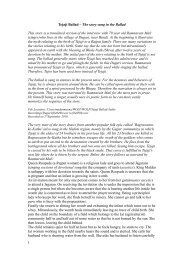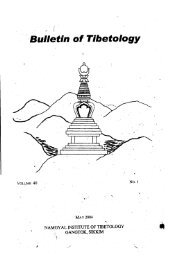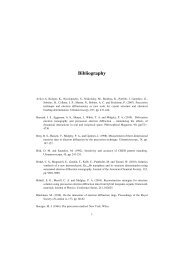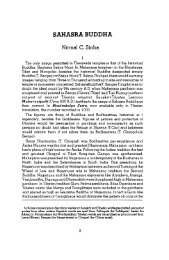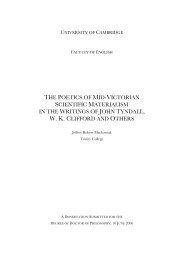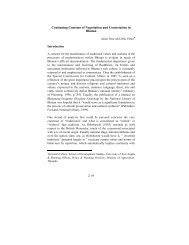Hinayanism
Hinayanism
Hinayanism
You also want an ePaper? Increase the reach of your titles
YUMPU automatically turns print PDFs into web optimized ePapers that Google loves.
ush and paint of the artist dedicated itself to Buddhist cause<br />
and was guided by equally persevering monks of Mahayana<br />
order, flourishing in the Vakataka kingdom, whose rainy<br />
season hibernation (Vassa-vasa) was located at Ajanta.<br />
Mahayanism considered Hinayana ArhJtship inadequate and<br />
replaced it by Bodhisattvah)od where guiding others to<br />
salvation is· the supreme goal, engendered by a pervasive<br />
sense of hllmanity. Mahayanism did not certainly bother about<br />
having to import Hindu gods in its pantheon. Indra, who<br />
was already Sakra to Hinayanaism became Satamanya and<br />
Vajrapani under Mahayanism, and his world was the Trayas<br />
trimsaloka, i. e., 33rd. Brahma's attributes were transferred<br />
to Manjusri (the god of wisdom) and Padmapani; Sarasvati<br />
continued to be a consort of the former. Pacm1pani is a<br />
variant of Visnu; Virupaksa, Ganesa, Sapta Tathagatas (seven<br />
sages), Mahakala, Aditya etc., were all duly gathered into<br />
the Buddhist pantheon. The five skandhas or elements that<br />
Buddhists believed in were Rupa, Vedana, Samjna, Samskara,<br />
and Vijnana. These are apotheosised into the five Dhyani<br />
Buddhas complete with their associative counterparts like<br />
Vairocana, Ratnasamthava, Amitatha, Amoghasiddhi and<br />
Aksobhya, and portray the vyakhya, varada, dhyana, athaya<br />
and bhumisparsa mudra respectively. They have their Taras<br />
also. Maitreya or the future Buddha is in the Tusita heavens<br />
and is to descend to earth 4000 years after Gautama Buddha.<br />
He usually holds, in Indian sculpture, lotus in right hand or<br />
Dharmachakra mudra, while his left has a vase. A valokitesvara<br />
is the Bodhisattva who reigns between the time of<br />
Gautama and Maitreya, and is said to take 108 forms all<br />
of which have been elaborated in painting in the Macchandar<br />
Vahel Vihara at Khatmandu, Nepal. Rhys Davids has<br />
remarked that "Mahayana theology is the greatest possible<br />
contradiction to the Agnostic Atheism which is the characteristic<br />
of Gautama's philosophy l'<br />
In the Budchist art at Ajantr t the notable and ubiquitous<br />
elements are: the Nagas; Hariti and Panchika; Buddha's<br />
meeting of Yasodhara and son Rahula; Temptation Scene<br />
of Buddha; river goddesses Ganga and Yamuna; dwarfs;<br />
Apsarases and ganas. The lataka stories are portrayed all<br />
over the walls and repeated over and over again in many<br />
em es. The most outstanding of these Jataka tales depicted<br />
at Ajanta are Sibi lataka and Mahajanaka Jataka, all in Cave<br />
1 (dateable to early seventh century A.D.), and Nalagiri<br />
lataka, Shaddanta lataka, Visvantara Jataka, Nigrodhamlga<br />
Jataka (in Cave 17).<br />
14



